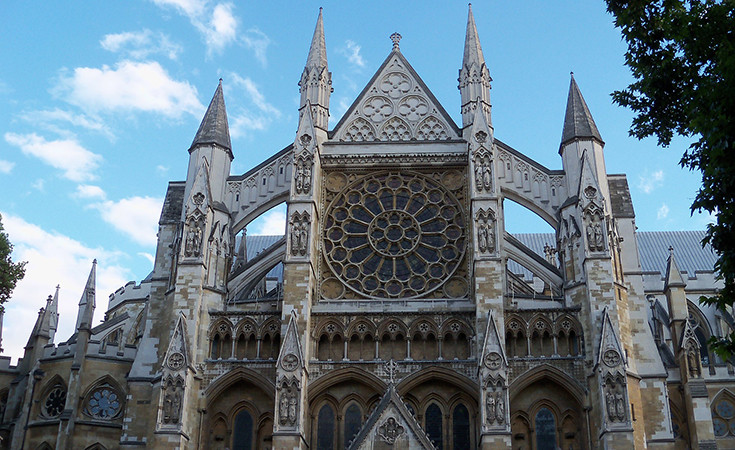
Westminster Abbey or the Collegiate Church of Saint Peter at Westminster, is the oldest religious building in London. It contains the remains of deceased members of the royal family, as well as some other famous Brits.
The famous Westminster Abbey was originally a Benedictine monastic church, until it was blessed in 1065 when it officially became an abbey. The building was renovated and enlarged several times during its existence – between 1285 and 1517 numerous gothic details were added to id, while two main towers were built in the 18th century. In 1539 the building stopped serving as a Benedictine monastic church, which transferred the church into the property of the then-King of England, Henry VIII. Conversely, during the reign of Henry VIII many churches and monasteries were devastated, because the King simply didn’t care for them. This phenomenon was quite common in England and Ireland.
In 1066, after the crowning of William the Conqueror in Westminster Abbey, the church acquired a new purpose and significance- all future kings of England were coronated within its bounds. In the 4th century, when King Edward I ordered the making of an oak throne decorated with “fate stone” (a red stone which was used in the coronations of Scottish kings for centuries), all of his future inheritors used this medieval throne.
It is interesting to note that Queen Elizabeth II celebrates her birthday here, and the Westminster Abbey was also the setting of Princess Dianna’s funeral. The exterior of
the Abbey is truly impressive and represents one of the best examples of medieval London architecture. When visitors come to the Abbey, they will notice several interesting spots worth their attention and time:
 Ticket price for Westminster Abbey:
Ticket price for Westminster Abbey: Working hours of Westminster Abbey
Working hours of Westminster Abbey